6 Tips to Keep Your Dog Cool this Summer
Posted: 07/31/2022 | BY: Erin Cain | Categories: Dog , Pet care , Top Tips
The summer months are a great time to enjoy the outdoors with your dog. Still, rising temperatures and heat pose significant threats to canine health. How can you and your pup enjoy the season while ensuring your dog’s health and wellbeing? It’s not impossible to have fun and create sunny memories with your pup despite the warm temps. Here are our top 6 tips to keep your dog cool this summer.
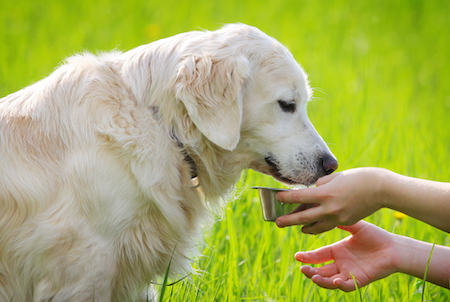
1. Always have fresh, clean water available for your dog.
To help prevent dehydration, always have fresh water available for your dog. You may not notice how much water your dog drinks all that often, but it’s essential to keep track during hot and humid weather. Dehydration in dogs occurs when a dog’s body loses more electrolytes and water than it takes in. Because water is a key component of almost every body function, dehydration causes stress to the body’s organs. Continued dehydration leads to kidney failure, which can quickly become fatal without immediate medical attention.
Encourage your dog to drink more water throughout the day during the summer. Consider placing multiple water dishes in your pup’s favorite areas around the house. You may also want to try an automatic water fountain, as moving water is attractive and appealing to many dogs.
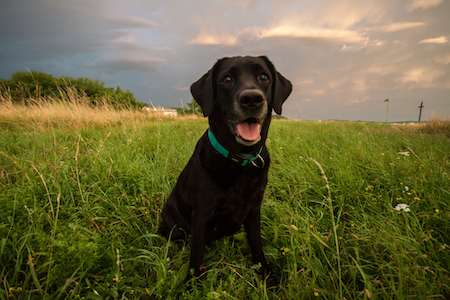
2. Change your walking routine.
The sun’s hot rays can make even a short walk outside exhausting and potentially dangerous, so be sure to adjust the time of day when you walk your dog. Aim for walking in the early morning or later evening when the temperatures are likely cooler and the full sun is not beating down on you. Bring plenty of water for your dog, even on short walks.
Remember that asphalt and pavement become incredibly hot quickly and cause discomfort, blisters, and burns on a dog’s paws. Temperatures over 80 degrees Fahrenheit pose a danger to the canine paw pad. Studies show that when the air temperature is 84 degrees F, the pavement temperature climbs to 135 degrees. Place the back of your hand on the pavement for 5 to 7 seconds, and if it’s too hot for your hand, it’s too hot for your dog’s paws. If you must walk your dog on hot days, avoid the pavement and walk on grass which will be somewhat cooler.
If the temperature is exceptionally high on any given day, avoid the walk and stay indoors with air conditioning or fans to keep your pup cool.

3. Groom your dog regularly.
Grooming your dog in the summer is vital for many reasons. Not only does it keep your pup cooler and more comfortable, but her coat also protects her skin from sunburn. Matted fur or fur close to the skin traps heat; this situation can be hazardous for dogs with double-coats and heavy undercoats. While those types of coats help keep a dog warm in winter, they can work against a dog’s health in the summer. Proper grooming can loosen and remove matted hair and undercoat, so your dog feels comfortable.
Avoid shaving your dog if she has an undercoat unless directed to by your veterinarian. Certain breeds with double coats, like Retrievers, Corgis, and Huskies, can suffer severe sunburn without the fur that protects them from UV rays. Shaving their coats can make a bad situation even worse. However, dogs with single coats may be good candidates for a summer shave, provided they will not be exposed to dangerous UV rays.
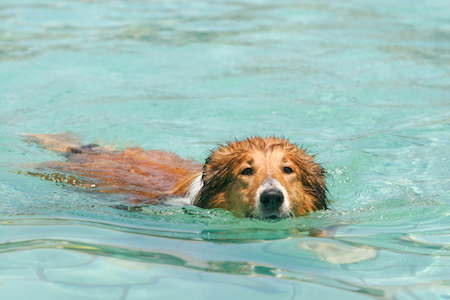
4. Cool off in the water.
For some dogs, swimming in the backyard pool or the nearest lake or pond is the best way to cool off. Even if you don’t have a private pool, you can purchase a relatively inexpensive and foldable one designed for dogs or use a plastic kiddie pool. Keep the pool in tip-top shape by filling it with fresh, cool water each morning and cleaning at night. Try to locate or provide shade over the pool during the day to keep the water as cool as possible.
The perfect pool for your dog is just the right size and offers a durable material. Avoid inflatable pools as a dog’s nails can quickly puncture the walls and destroy the pool. If your dog is new to swimming, introduce her gradually to the water and have her wear a safety vest, especially in bodies of water or while on a boat. Never leave your dog unattended in the water.
If a doggie pool isn’t a realistic possibility for you, try setting up an oscillating yard sprinkler and letting your pup run through it.
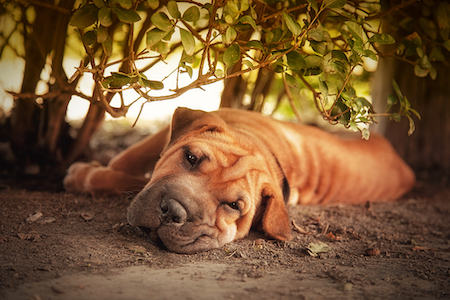
5. Provide lots of shade for your pup.
The easiest way to give your dog a cool place in the hot sun is by providing them with shade. Trees are the go-to shade spot, but what if you live somewhere without nearby trees? You can use patio umbrellas, pop-up canopies, and portable sunshades to help create a cooler environment where your dog feels at ease.
Another option to keep your pet cool in the shade is a shaded dog bed. It will provide reliable cover and keep your pup cool. Most shaded dog beds are elevated, meaning the structure is off the ground and promotes air circulation, resulting in a comfortable place to lie down and beat the heat. Additionally, there are cooling beds for pets that provide comfy material with cooling gel. These beds are made of durable plastic and are available in various sizes.
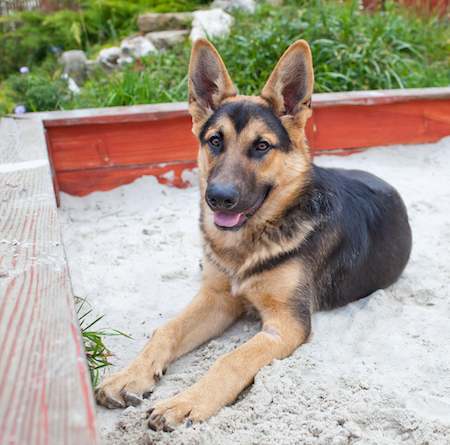
6. Build your pup a sandbox.
Sandboxes aren’t just for children! Your dog can benefit from a doggie sandbox during the summertime. Building a sandbox out of wet sand is an excellent way to keep your dog calm and happy. Dogs love the feeling of digging, especially in cool material on a hot day.
Find the perfect location for her sandbox to ensure your dog has a safe and fun time outside. This spot should get some partial sun and shade from harsh elements such as heat or UV rays, so your pup doesn’t overheat during playtime. Place the sandbox where you can easily see it so you can watch your dog while she plays in the cool sand.
Protect your pup from the sun and heat with pet insurance.
Summertime can be fun for many pup parents and their dogs, but it poses some significant dangers. Heatstroke is a severe condition with a mortality rate of 50% without immediate treatment that can impact any dog exposed to heat and high temperatures. Should the unexpected happen and your dog needs treatment for any heat-related condition, you’ll want peace of mind with a pet insurance policy.
Fill out a free quote, and Pet Insurance Review will find the best plans available for you and your dog from top insurance providers. Keep your dog cool and safe with pet insurance!
References:
- Carolina Veterinary Specialists Charlotte. (2022). Signs of Dehydration in Dogs. Retrieved from https://www.charlotte.carolinavet.com/site/charlotte-emergency-vet-blog/2021/04/19/signs-dehydration-dogs
- Waldorf Gewirtz, E. (2021). How Hot Is Too Hot for a Dog’s Paws? Retrieved from https://www.akc.org/expert-advice/home-living/dog-paws-hot-pavement/
- Bruce, J. (2022). Sun Safety Tips for Dogs and Cats. Retrieved from https://www.akc.org/expert-advice/home-living/dog-paws-hot-pavement/
- Cain, E. (2022). 7 Tips for Dog Water Safety. Retrieved from https://www.petinsurancereview.com/blog/7-tips-for-dog-water-safety
- Holden Robinson, C. (2021). How to Build Sandboxes for Dogs. Retrieved from https://www.cuteness.com/article/build-sandboxes-dogs
- Iowa Veterinary Specialties. (2022). Canine Heat Stroke. Retrieved from https://www.iowaveterinaryspecialties.com/student-scholars/canine-heat-stroke-literature-review
Disclaimer
The information contained on this blog is intended for informational and educational purposes only and should not be construed as medical advice. It is not a substitute for professional veterinary care. Always consult with your veterinarian before making any changes to your pet's health care or treatment plan.
The authors of this blog are not veterinarians and do not claim to be experts in pet health. The information provided here is based on our own experiences and research, as well as information from reputable sources. However, we cannot guarantee the accuracy or completeness of this information.
We encourage you to do your own research and consult with your veterinarian before making any decisions about your pet's health.
Previous post
Sun Safety Tips for Dogs and CatsNext post
Cat Acne: Causes and TreatmentsCompare top pet insurance providers & plans.
Enter your dog’s age in years and months to calculate their age equivalent to human years.
Calculate your dog’s ageEnter your cat’s age in years and months to calculate their age equivalent to human years.
Calculate your cat’s age